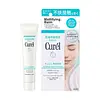What's inside
What's inside
 Key Ingredients
Key Ingredients

 Benefits
Benefits

 Concerns
Concerns

 Ingredients Side-by-side
Ingredients Side-by-side

Cyclopentasiloxane
EmollientDimethicone
EmollientDimethicone/Vinyl Dimethicone Crosspolymer
Skin ConditioningCyclohexasiloxane
EmollientSilica
AbrasivePolymethylsilsesquioxane
Dimethicone/PEG-10/15 Crosspolymer
Parfum
MaskingPolymethyl Methacrylate
Water
Skin ConditioningMineral Salts
Skin ConditioningTriethoxycaprylylsilane
Propanediol
SolventMentha Arvensis Leaf Extract
Masking1,2-Hexanediol
Skin ConditioningPhenoxyethanol
PreservativeOpuntia Coccinellifera Fruit Extract
Skin ConditioningAluminum Hydroxide
EmollientCI 77891
Cosmetic ColorantSodium Citrate
BufferingOrchid Extract
Skin ConditioningCamellia Sinensis Leaf Extract
AntimicrobialCI 77491
Cosmetic ColorantDiospyros Kaki Fruit Extract
Skin ConditioningCI 77492
Cosmetic ColorantCI 77499
Cosmetic ColorantCitrus Unshiu Peel Extract
MaskingEthylhexylglycerin
Skin ConditioningMica
Cosmetic ColorantCamellia Japonica Leaf Extract
Skin ConditioningTitanium Dioxide
Cosmetic ColorantLinalool
PerfumingButylene Glycol
HumectantLimonene
PerfumingTocopherol
AntioxidantDipropylene Glycol
HumectantCyclopentasiloxane, Dimethicone, Dimethicone/Vinyl Dimethicone Crosspolymer, Cyclohexasiloxane, Silica, Polymethylsilsesquioxane, Dimethicone/PEG-10/15 Crosspolymer, Parfum, Polymethyl Methacrylate, Water, Mineral Salts, Triethoxycaprylylsilane, Propanediol, Mentha Arvensis Leaf Extract, 1,2-Hexanediol, Phenoxyethanol, Opuntia Coccinellifera Fruit Extract, Aluminum Hydroxide, CI 77891, Sodium Citrate, Orchid Extract, Camellia Sinensis Leaf Extract, CI 77491, Diospyros Kaki Fruit Extract, CI 77492, CI 77499, Citrus Unshiu Peel Extract, Ethylhexylglycerin, Mica, Camellia Japonica Leaf Extract, Titanium Dioxide, Linalool, Butylene Glycol, Limonene, Tocopherol, Dipropylene Glycol
Dimethicone
EmollientSilica
AbrasiveCI 77120
Cosmetic ColorantHydrogenated Polyisobutene
EmollientButylene Glycol
HumectantGlycerin
HumectantSqualane
EmollientVinyl Dimethicone/Lauryl Dimethicone Crosspolymer
Water
Skin ConditioningDipropylene Glycol
HumectantCetyl-Pg Hydroxyethyl Palmitamide
Skin ConditioningDextrin Palmitate
EmulsifyingEucalyptus Alba Leaf Extract
Skin ConditioningPEG-10 Dimethicone Crosspolymer
StabilisingHydroxyundecanoic Acid
Skin ConditioningPullulan
Cholesterol
EmollientSodium Methyl Stearoyl Taurate
CleansingPEG-60 Hydrogenated Castor Oil
EmulsifyingSuccinic Acid
BufferingZinc Oxide
Cosmetic ColorantDimethicone, Silica, CI 77120, Hydrogenated Polyisobutene, Butylene Glycol, Glycerin, Squalane, Vinyl Dimethicone/Lauryl Dimethicone Crosspolymer, Water, Dipropylene Glycol, Cetyl-Pg Hydroxyethyl Palmitamide, Dextrin Palmitate, Eucalyptus Alba Leaf Extract, PEG-10 Dimethicone Crosspolymer, Hydroxyundecanoic Acid, Pullulan, Cholesterol, Sodium Methyl Stearoyl Taurate, PEG-60 Hydrogenated Castor Oil, Succinic Acid, Zinc Oxide
Ingredients Explained
These ingredients are found in both products.
Ingredients higher up in an ingredient list are typically present in a larger amount.
Butylene Glycol (or BG) is used within cosmetic products for a few different reasons:
Overall, Butylene Glycol is a safe and well-rounded ingredient that works well with other ingredients.
Though this ingredient works well with most skin types, some people with sensitive skin may experience a reaction such as allergic rashes, closed comedones, or itchiness.
Learn more about Butylene GlycolDimethicone is a type of synthetic silicone created from natural materials such as quartz.
What it does:
Dimethicone comes in different viscosities:
Depending on the viscosity, dimethicone has different properties.
Ingredients lists don't always show which type is used, so we recommend reaching out to the brand if you have questions about the viscosity.
This ingredient is unlikely to cause irritation because it does not get absorbed into skin. However, people with silicone allergies should be careful about using this ingredient.
Note: Dimethicone may contribute to pilling. This is because it is not oil or water soluble, so pilling may occur when layered with products. When mixed with heavy oils in a formula, the outcome is also quite greasy.
Learn more about DimethiconeDipropylene Glycol is a synthetically created humectant, stabilizer, and solvent.
This ingredient helps:
Dipropylene glycol is technically an alcohol, but it belongs to the glycol family (often considered part of the ‘good’ alcohols). This means it is hydrating and gentle on skin unlike drying solvent alcohols like denatured alcohol.
As a masking agent, Dipropylene Glycol can be used to cover the smell of other ingredients. However, it does not have a scent.
Studies show Dipropylene Glycol is considered safe to use in skincare.
Learn more about Dipropylene GlycolSilica, also known as silicon dioxide, is a naturally occurring mineral. It is used as a fine, spherical, and porous powder in cosmetics.
Though it has exfoliant properties, the function of silica varies depending on the product.
The unique structure of silica enhances the spreadability and adds smoothness, making it a great texture enhancer.
It is also used as an active carrier, emulsifier, and mattifier due to its ability to absorb excess oil.
In some products, tiny microneedles called spicules are made from silica or hydrolyzed sponge. When you rub them in, they lightly polish away dead skin layers and enhance the penetration of active ingredients.
Learn more about SilicaWater. It's the most common cosmetic ingredient of all. You'll usually see it at the top of ingredient lists, meaning that it makes up the largest part of the product.
So why is it so popular? Water most often acts as a solvent - this means that it helps dissolve other ingredients into the formulation.
You'll also recognize water as that liquid we all need to stay alive. If you see this, drink a glass of water. Stay hydrated!
Learn more about Water